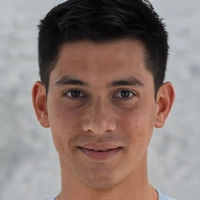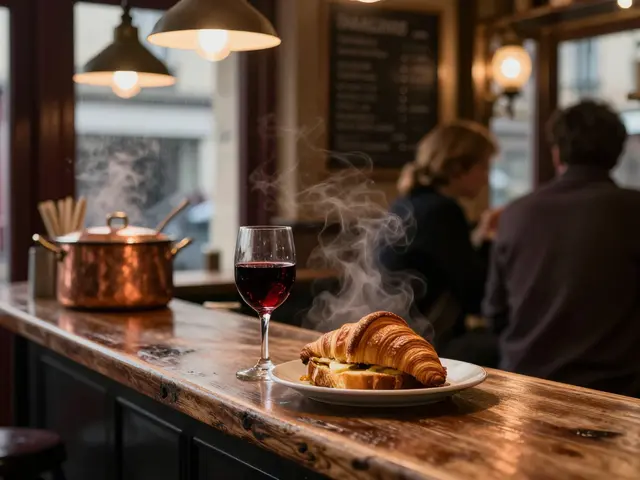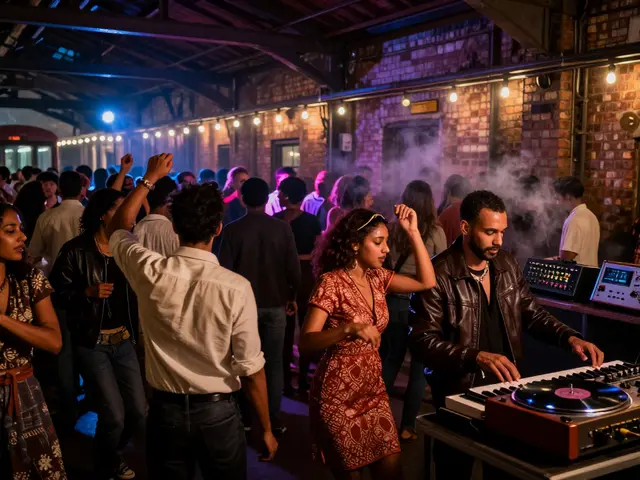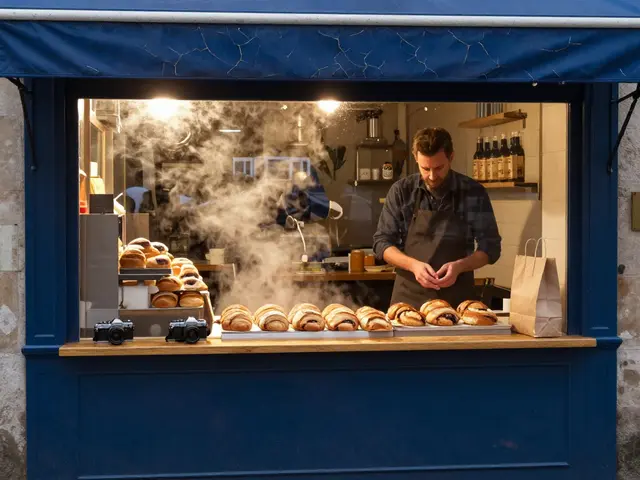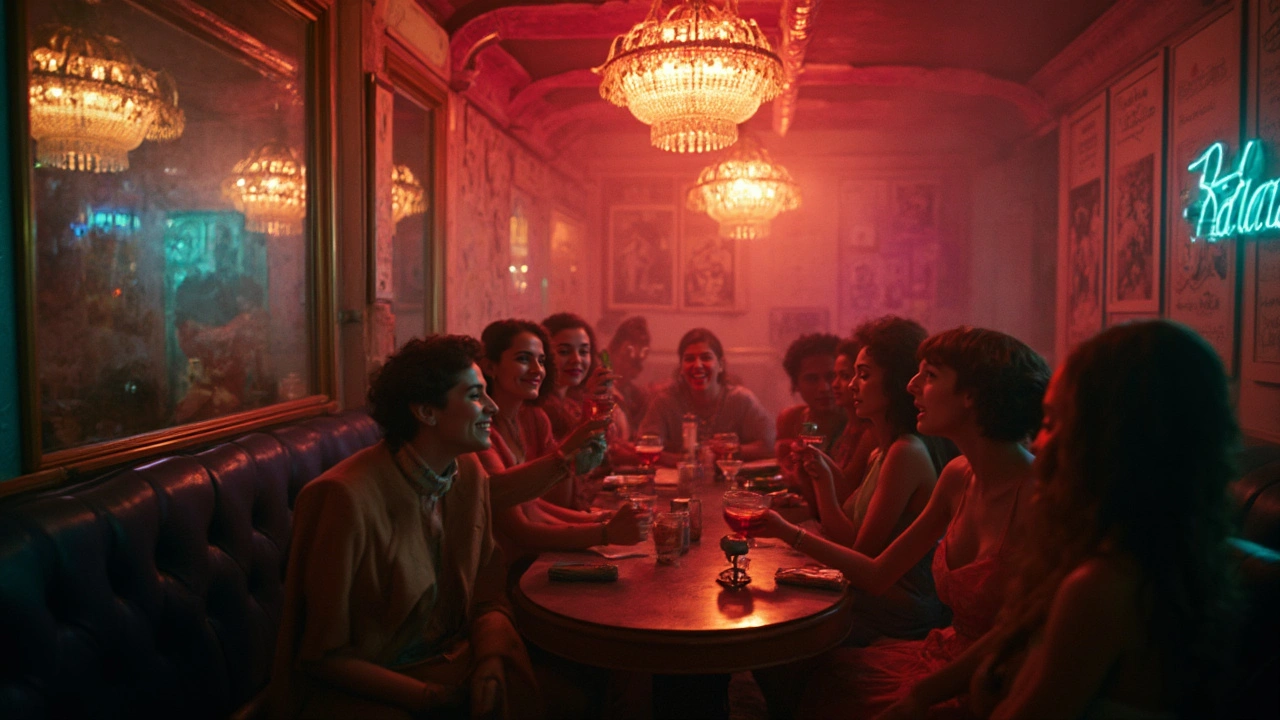
If you think you know Paris after a few walks down the Seine or a selfie in front of the Eiffel Tower, think again. There’s a whole side of the city pulsing after dark, snapping with creative energy and packed with personalities you won’t find flipping through a tourist brochure. And at the center of it all is Phil Holliday—one of those rare photographers who doesn’t just capture a scene but gives you a backstage pass to a world most people never see.
Phil’s spotlight isn’t about glitz for glitz’s sake. He’s spent years documenting the real Parisian LGBTQ+ scene—underground drag shows in Belleville, wild nights in converted warehouses, and groups of friends that turn a regular bar into a legendary event. If you’re tired of cookie-cutter experiences, following Phil’s work is the hack you didn’t know you needed. A single Holliday photo can show you which places are full of life and which ones are just polished for Instagram.
- Phil Holliday: The Man Behind the Camera
- Paris Nights: Where Art and Life Mix
- Hidden Venues and Local Legends
- A Peek Into the LGBTQ+ Creative Hustle
- Tips for Exploring Paris with a Queer Lens
Phil Holliday: The Man Behind the Camera
Walk through any Paris night that feels raw and real, and chances are you’ll spot Phil Holliday’s camera before you ever meet the guy. He’s not flashy, but he’s everywhere, capturing moments that most folks would miss. Phil Holliday moved to Paris in the late 1990s, drawn by the city’s freewheeling creative energy and a thriving LGBTQ+ community. Since then, he’s built a name as the go-to photographer for the city’s queer underground—think high-energy drag battles, up-and-coming queer DJs, and bold street performers breaking out in Montmartre.
What sets Phil apart isn’t just his timing or style—it’s trust. Artists and club owners actually want him at their events. If you see a flyer with his photos, you know the spot is probably worth checking out. Phil’s portfolio spans over two decades and includes collaborations with cult venues like La Mutinerie and Champmeslé, plus features in edgy magazines like Out and QX Paris. He’s been asked to shoot Paris Pride more times than most can count, often giving a totally different angle by focusing on the people behind the banners.
Phil’s approach is simple but direct—he wants his photos to be a bridge. He’s said, more than once, that his goal is to help outsiders find their crowd and give under-the-radar creatives a spotlight. No wonder new artists constantly reach out, hoping to get in front of his lens.
Here’s what you can pick up from Phil’s way of working:
- Don’t ask permission, blend in. Get your camera out, but never upstage the scene.
- Network by listening, not just talking. At every shoot, Phil learns what’s important to his subjects, which always shows up in the final shot.
- Keep moving. The right photo rarely happens when you stand still.
If you want inspiration—or guts—to shoot nightlife or queer culture, digging into Phil’s photo essays is a smart place to start. The guy has managed to make Paris feel both huge and small at once, which is no easy feat.
Paris Nights: Where Art and Life Mix
Paris isn’t just about quiet cafés and the shadow of the Eiffel Tower. When the sun dips, the city’s LGBTQ+ art scene cranks up the energy. The best part? You can really get a feel for it if you know where to look. Home to famous queer hubs like Le Marais, Paris is packed with underground parties, cozy queer-owned bars, and unexpected galleries showing off raw, honest work.
Phil Holliday is known for showing what this scene looks like from the inside. He’s not shooting from the sidelines—he’s in the crowd, blending art and nightlife. At venues like Gibus Club, you’ll see drag, experimental performances, and electronic music all happening in a single night. Then there’s La Mutinerie, a staple for lesbian and feminist nightlife, where events are both spontaneous and political—think open mics one night, activist talks the next.
This melting pot isn’t just about parties. A lot of queer art in Paris shows up outside traditional galleries. Sidewalks in the 11th arrondissement turn into pop-up art fairs. You might catch a street artist tagged in Phil’s photos suddenly arranging a live set up at an LGBTQ+ film night. The city’s been considered a safe haven for LGBTQ+ people since the '80s, which only adds to its energy—French law fully legalized same-sex activity back in 1791, making it one of the earliest adopters of LGBTQ+ rights in Europe.
Want to spot trends before they hit mainstream? Here’s what to watch for:
- LGBTQ+ art collectives like Queer Week collaborate across venues, mixing film, photography, and performance art.
- Spontaneous street parties, especially during Pride month, often feature artists and DJs that Phil’s documented. These usually bounce between Café Cox and Le Dépôt late into the night.
- Workshops at Les Grands Voisins, a former hospital turned art squat, draw creatives wanting to break the mold.
It’s not a typical tourist itinerary, but if you’re looking for authentic scenes—real art, real people, real stories—Paris after dark, especially through the lens of someone like Phil, shows you how art and life blend into something electric every night.
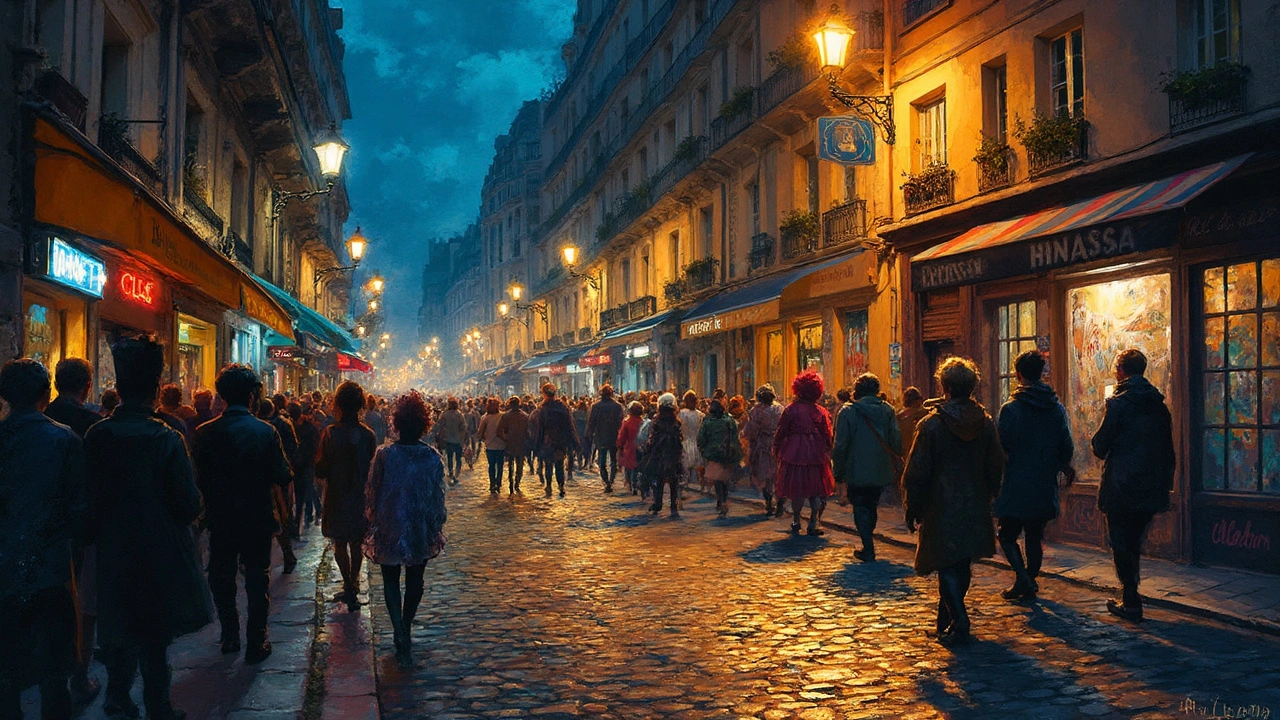
Hidden Venues and Local Legends
Paris has a habit of hiding its best surprises behind plain doors and unmarked stairways. Ask anyone who’s tried searching for that perfect queer night out, and they’ll tell you the real treasures are the venues that feel like they’re just for you and your closest friends. Phil Holliday is basically the unofficial mapmaker for these places, snapping photos at parties you’d never spot without an inside tip.
One legend is Les Souffleurs, a tiny bar in the Marais that’s managed to stay cool without getting overly fancy. The walls display work by LGBTQ+ artists—some of whom got their first real boost when Phil Holliday showed up, camera in hand. If you want packed nights but hate big crowds, check out Le Feeling in the 11th arrondissement. Known for its welcoming vibe, it’s hosted underground DJs and dance parties since 1984, drawing regulars who’ve seen the city’s scene evolve for decades.
Don’t skip La Mutinerie—a relaxed spot where a lot of up-and-coming talent get their start. Drag, poetry, and community groups all find a home here. It’s the sort of place that pops up again and again in Phil’s shots, often because it’s where he discovers new faces who later become staples of Paris nightlife.
Want to hunt down even more of these gems? Here’s how people in the know avoid tourist traps and find true Parisian LGBTQ+ nightlife:
- Follow venue social media closely—some events only get announced a day or two in advance.
- Watch for Phil Holliday’s latest Instagram stories; he often tags spots you can check out that same week.
- Talk to bartenders or staff for the real scoop—they tend to know what’s happening after hours.
No matter which spot you land in, remember: the best Parisian nights happen in places that want everyone to feel welcome, and Phil Holliday’s photos make it way easier to find them.
A Peek Into the LGBTQ+ Creative Hustle
When it comes to the Paris LGBTQ+ art scene, things move fast and get real creative. People like Phil Holliday don’t just snap pretty photos—they’re documenting sharp, raw moments at events you probably won’t find in mainstream guides. Offbeat cabaret, live painting in bars, or pop-up shows in the Marais—these are more than just parties. They’re where ideas, art, and activism all blend together.
This hustle isn’t all fun and games. Artists here deal with high rents, crowded venues, and the pressure to stand out in a city full of talent. You’ll see creatives juggling several gigs: drag brunches by day, gallery set-ups by night, and some serious social media grind in between. According to stats published by France 24 in 2023, Paris has over 50 recurring LGBTQ+ cultural nights a month. That’s double what the city had just five years ago.
| Type of Event | Average Monthly Occurrences |
|---|---|
| Drag Performances | 22 |
| Photo Exhibits | 8 |
| Open Mic Nights | 15 |
| Queer Film Screenings | 5 |
Hustling in this scene means networking hard. If someone tells you, “Show up and support even when you’re not on the bill,” believe them. Local artist Léon said it best:
"You don’t get noticed by staying home. The Paris scene is about showing up, collaborating, and cheering on each other’s wildest ideas."
Most folks here use Instagram as their main promo tool. If you want to get involved or just see the freshest work, follow artists and photographers like Phil Holliday. The key is respect: buy a ticket, share a post, tip a performer. Trust me, you’ll get a lot more out of it if you interact instead of just watching from the sidelines.
And don’t think you need some exclusive invite. Many events run on open doors or pay-what-you-can policies. Just show up with an open mind. That’s how you find the real LGBTQ art and nightlife magic in Paris.

Tips for Exploring Paris with a Queer Lens
Want to see Paris through the eyes of Phil Holliday and the local LGBTQ+ community? There’s more to this city than rainbow flags during Pride month. From low-key cafés to rowdy club nights, every pocket has something different. Here’s how to get right into the action.
- Start in Le Marais. This isn’t just the classic gay district—it’s where things keep evolving. Rue des Archives and Rue Sainte-Croix de la Bretonnerie are lined with LGBTQ+ bars, bookshops like Les Mots à la Bouche, and drag brunch spots that get busy by noon on weekends.
- Look out for Phil Holliday’s photo exhibits. He’s hosted pop-ups in galleries like Le Point Éphémère and Les Douches la Galerie. These shows don’t just hang prints on the wall; you’ll meet the people in the photos, find out about secret gigs, and get the vibe of the scene.
- Skip the obvious clubs and try the DIY warehouse parties. Follow local collectives like Barbi(e)turix or House of Moda on Instagram to snag invites to underground events that rarely make it onto English-language listings.
- When you need a break, dive into queer histories at the Musée Carnavalet or take a guided LGBTQ+ tour. Both drop facts you won’t hear on mainstream walks—like stories about French activists or how cabaret was used for protest.
- Don’t overlook lesbian, trans, and POC spaces. Places like La Mutinerie and Lesbien Raisonnable have totally different energy from the mainstream dance floors, plus events for every identity and taste.
If you’re all about meeting locals, snag a ticket for the next Petit Bain queer boat party—they sell out fast for a reason.
| Neighborhood | Main Attraction | Best For |
|---|---|---|
| Le Marais | LGBTQ+ bars, shops | Nightlife, meeting people |
| Belleville | Underground drag shows | Alternative scene |
| Bastille | Punk cabarets | Experimental art |
Don’t just wander—ask bartenders, event photographers, and even drag queens for tips. The best moments in Paris don’t get advertised; they get whispered about. Stick with the locals and you’ll see the city Phil Holliday puts in the spotlight: wild, creative, and a million times friendlier than it looks from the outside.

